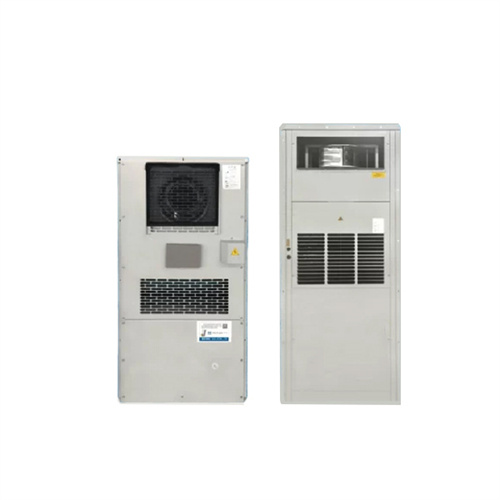Are photovoltaic inverters afraid of water

Design and Evaluation of a Photovoltaic Inverter with Grid
photovoltaic (PV) inverter applications. Additionally, the stability of the connection of the inverter to the grid is analyzed using innovative stability analysis techniques which treat the inverter and

Preventing and Mitigating Flood Damage to Solar
Through diversion, these features can move water around or away from solar PV equipment, preventing foundation piles and equipment pads from getting undermined. This prevents soil from leaving the site and polluting rivers,

Design and Development of a Solar PV Inverter for Water
way that the solar PV panel is always operated at the maximum power point and the latter wherein the flow rate of the pump is controlled by varying the speed of the motor by means of

Understanding The Risk Of Water Damage To Solar
Water damage poses a significant risk to solar inverters, potentially leading to decreased performance or complete failure. Considering important factors such as indoor or outdoor installation, cable distance from

Floating Solar: A Review on the Comparison of
Floating solar has been an innovative technique for scaling solar PV project development. This research showcases the expected negative and positive ecological influences from photovoltaic frameworks with a specific

How to pick the right Inverter: Guide from Naked Solar
Solar PV Inverters. Any solar panel system is only as efficient as its weakest part. The importance of inverters is often overlooked during the design stage. Firefighters can also spray water on a SolarEdge optimised system because

Inverters: function, selection and installation tips
Photovoltaic inverters "chop up" incoming DC voltage in order to then periodically reverse the polarity. While this used to be performed mechanically, transistors and special electrical circuits carry out this function today. water and air

Inverters: function, selection and installation tips | Viessmann SG
Inverters for PV systems convert direct current into alternating current. Read on to find out why this is necessary and how to choose the right inverter. water and air quality) and renewable

Sustainability Leadership Standard for Photovoltaic Modules and
mobile PV cell where the inverter is so integrated with the PV cell that the solar cell requires disassembly before recovery. 2) PV inverters to convert and condition electrical power of a PV

Development of Optimal PI Controllers for a Grid-Tied Photovoltaic Inverter
Grid-Tied Photovoltaic Inverter Ali Arzani 1, Student Member, and water-flows change during a day. Sophisticated grid interfaces are desired for these sources to enable non-fluctuating,

Enhancing Inverter Protection Best Practices for Outdoor
1 天前· Solution: Refer to the product manual for installation spacing, the bottom of the conventional installation inverter is≥500mm from the ground; For tilt-mounted installations, the

Grid Fault Ride Through Capability of Voltage
For photovoltaic (PV) applications, the proposed control scheme is based on an enhanced finite-set model predictive control (MPC) to harvest the desired active power from the PV modules with the

Development of Optimal PI Controllers for a Grid-Tied Photovoltaic Inverter
on-site based tuning of PV-inverter controllers, to perform op-timally over a wider range of operating irradiance conditions. II. PV-SYSTEM MODEL ANDCONTROL The PV-system

6 FAQs about [Are photovoltaic inverters afraid of water ]
Do I need a solar inverter?
However, your home operates using alternating current (AC or “household”) electricity. A solar inverter converts DC to AC electricity. Depending on your system, a storage inverter or power optimiser may also be required. In short, you can’t have a residential or portable solar power system without at least one solar inverter.
What does a solar inverter do?
Inverters convert the solar power harvested by photovoltaic modules like solar panels into usable household electricity. Some system topologies utilise storage inverters in addition to solar inverters. But what exactly does a solar inverter do — and how does it work? Read on to find out. What Is a Solar Inverter?
Can a solar inverter generate a lot of electricity?
Voltage and current ranges vary from inverter to inverter. You may have one installed that appears to work fine, however when either the voltage or current reaches extremes of light levels or temperature (temperature affects the solar panel’s voltage) then your inverter may not be able to generate as much as it should.
Can a solar inverter be a standalone component?
In larger residential and commercial solar balance of systems, the inverter may be a standalone component. For example, EcoFlow PowerOcean can provide up to 12 kilowatts (kW) of AC output and up to 14kW of solar charge input (35 x Ecoflow 400W rigid solar panels)
What happens if a solar inverter exceeds the voltage capacity?
Similarly, solar inverters have a maximum voltage capacity. You can add more PV panels to your array and continue using the same inverter. If you wired the same array in series and exceed the voltage capacity of your inverter, it will either shut down or permanently damage the component.
Does a solar inverter need a charge controller?
In off-grid or hybrid solar systems, PV modules may send DC electricity to a solar charge controller first. However, the solar inverter is still an integral part of the balance of the system. (Source: Penn State) Microinverters — also known as module inverters — are generally built into photovoltaic modules.
Related Contents
- Are conventional photovoltaic brackets afraid of water
- Are photovoltaic panels afraid of freezing if there is water in them
- Photovoltaic panel water tank construction
- How to use photovoltaic inverters in parallel
- Automatic inspection of photovoltaic micro inverters
- What to do if there is water on the photovoltaic panels
- Chint Electric divests photovoltaic inverters
- Analysis of the causes of damage to photovoltaic inverters
- What to look for when matching photovoltaic inverters
- Types of photovoltaic grid-connected inverters
- Water surface photovoltaic panel installation process diagram
- What does CHC mean in photovoltaic inverters